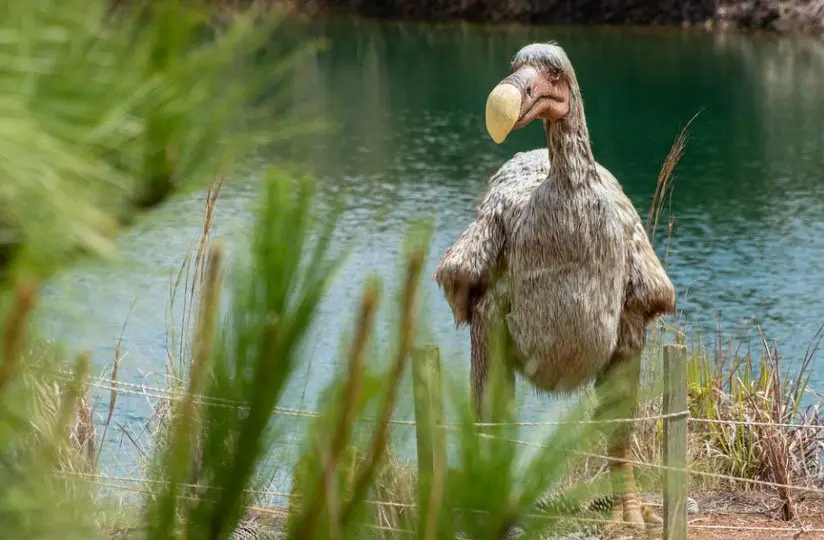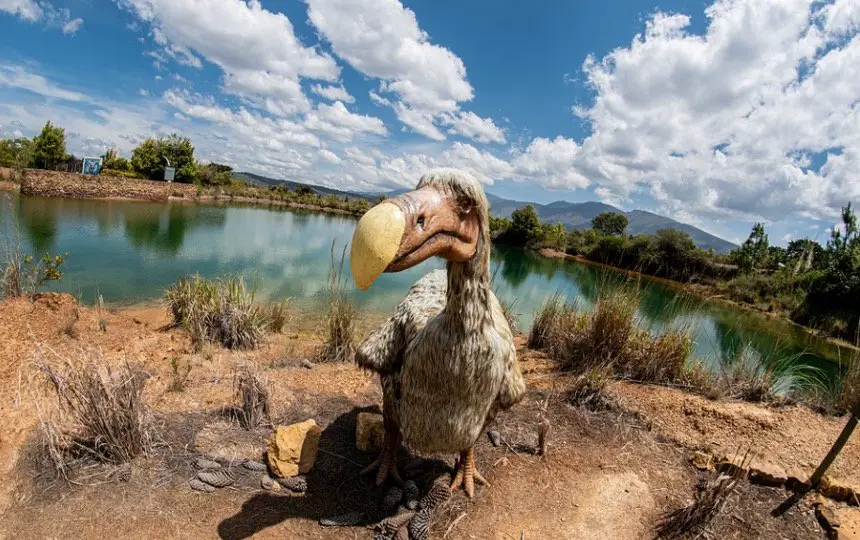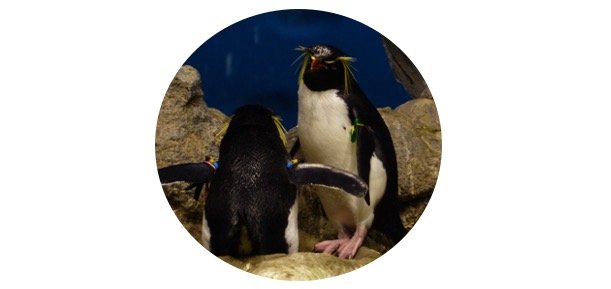Dodo: Description, Types, Pictures, & Fun Facts

Table of Contents
Scientific Classification of Dodo
- Kingdom: Animalia
- Phylum: Chordata
- Class: Aves
- Order: Columbiformes
- Family: Columbidae
- Genus: Raphus
- Scientific name: Raphus cucullatus
Dodo Description
The dodo is a bird that belongs to the family Columbidae. At first, some European sailors discovered the birds in 1598. However, after their discovery, the birds were used to show their backwardness but despite that, the birds survived in the tough environment of Mauritius and have adapted themselves.
Unfortunately, the dodo bird was the victim of circumstances. Humans also hunted the birds and it also introduced species. Around 1688, the dodo bird went extinct. The information today we have about the bird comes from contemporary accounts and also from some modern studies about its anatomy.
The bones and soft tissues of the bird were also preserved after the discovery of a few specimens from Europe.
Incredible Facts About Dodo!
• After the appearance of the bird as a minor character in the chapters of Alice’s Adventures in Wonderland, the bird becomes quite popular worldwide. Some people believe that in this book, the character of the dodo was a stand-in for its author Lewis Carroll and it acts like a free-for-all race while everyone is a winner by design.
• However, the reputation of the dodo was made as a tactless bird but it is revealed by studies that the dodo was a great runner and capable to run very fast.
• It is still unclear that the word dodo is originated from where but it is suggested that it might be derived from a Dutch word that means sluggard. Is it also believed that the word is derived from a Portuguese word, which stands for crazy, fool, or simpleton? The word dodo is added into the English language in the early 1600s despite its origin.

Appearance and Behavior of Dodo
The anatomical reconstruction of the dodo bird reveals that the dodo is a large bird that has a plump-shaped body similar to chicken and turkey. Dodo consists of long legs and strong claws. The bird has curly tail feathers but a featherless head with bare feet that are yellow-colored.
The birds are not good flyers because they did not get support from their short and undeveloped wings in flight. However, the birds are great runners and have good speed. They have gray colored beak which is quite big and hooked at the end.
Towards its tip, the beak is yellow or green colored and has a significant role in hunting prey. They also use their beak for resolving their conflicts with other members of the species. The color of a dodo is a subject of conflict between sailors.
According to the sailors, the dodo was black or grey in color but it is contradictory because studies revealed that the plumage of a dodo is of brown-grey color and it became black while molting.
The dodo bird has a length of 3 feet and it weighs up to 50 pounds. The length of the only beak is around 9 inches! The birds remain isolated thus their feature is considered responsible for their unusual characters.
The bird has not any natural predators and the bird lost its flying ability due to its gradually increasing size. However, the birds easily compensate for their inability with the rest of the body. They can run very fast and also evolved some adaptations for defense.
The adaptations can be physical or behavioral. The dodo bird builds their nests in open areas and leaves them exposed completely. Thus dodo becomes vulnerable when settlers arrive in these areas.
Habitat of Dodo
The scientific name of the dodo is Raphus cucullatus. The genus name of the bird is derived from the Latin word ‘cucullus’, which stands for a hood. Perhaps the word is used due to the appearance of a cowl-like head.
The solitaire birds including Rodrigues and Reunion are closely related species of the dodo. The species resides in the east and west of Mauritius. Interestingly, both the species went extinct at the same time with the dodo.
It is considered by many scientists that the dodo is a member of the family Columbidae, which also includes pigeons and doves. However, some scientists include the bird in a separate family.
Diet of Dodo
However, such information is not available about the diet of the dodo but it is known that they are omnivorous birds. The information about their diet is totally based on modern inferences from its anatomy and on a single description.
What Does Dodo Eat?
Generally, dodo feed on fruits, nuts, seeds, and roots but is also considered that they also eat shellfish, such as crabs. However, the information is not proven but it is indicated in several reports that they have also consumed stones and iron.
It is believed that they eat such things to grind up food and to increase digestion. Actually, besides dodos, many other animals also show this behavioral quirk.
Predators and Threats of Dodo
As discussed above that the birds did not have any natural predators thus they were not threatened by predation or had any pressure before the arrival of humans. The habitat of the bird is an Island, which is isolated and located too far out at sea thus predatory animals and reptiles could not reach there and they remained protected.
It is also reported that the bird gave a fearsome bite to the organism, which went too close. The bird survived easily in the tough conditions of the island and face volcanic activities and frequent cyclones.
What Eats Dodo?
It is not threatened by any natural predator but the birds become a target for settlers. The human settlers kill the birds in large numbers and usually sailors save the dodos for later instead of eating them immediately.
It is indicated in some reports that the sailors kill the birds and club them to death. Unfortunately, the introduction of some animals such as pigs, rats, deer, cats, and monkeys sealed their fate completely. The animals prey upon the exposed eggs or trampled nests of the dodo bird.
Reproduction, Babies, and Lifespan of Dodo
Before the rise of modern scientific methods, the dodo bird went extinct. Till the time very little is known about the reproductive methods of the dodo. It is written by contemporary observers that the bird produces a single egg at a time.
It is believed that they may do this because they did not have any predatory stress. According to a scientific study based on their bone structure, the chicks hatch in August and then grow very quickly. This feature increases their chances of survival because the cyclones arrived between November and March in the island and battered the island.
The availability of food resources such as fruits and other vegetation is also destroyed due to cyclones. Despite such tough conditions, the lifespan of a dodo is more than 20 years in the wild.
Population of Dodo
The birds were seen in 1688 and probably went extinct after this when they completed 90 years of their discovery. However, the population of dodos is not very high but it is demised due to several new threats introduced in their habitat.
It is also believed that the bird can be revived by using dew fragments of DNA, which is remained in the leftover soft tissue. According to scientists, the pigeon is required in this plan as a surrogate mother. However, the plan is considered very unpractical and unlikely to work by some researchers.









